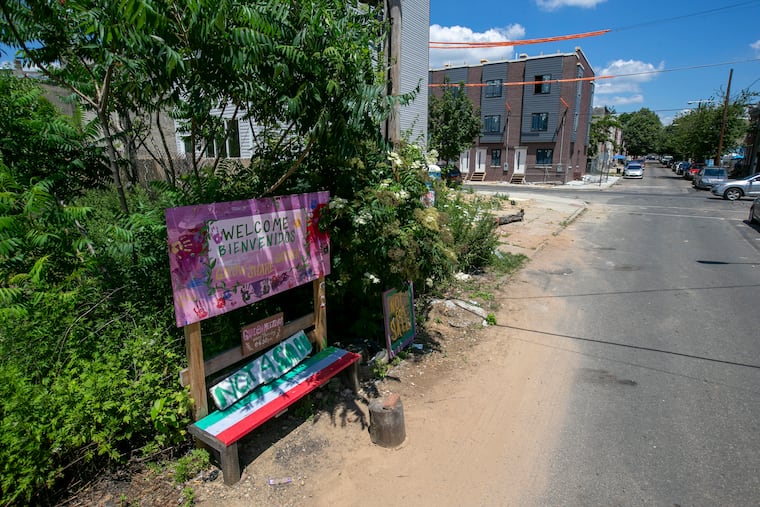Creating a more equal America demands more urban green spaces | Opinion
Some Americans are deprived of the well-documented physical and mental health benefits associated with green space — so sorely needed during these dark times.

Among many other revelations about American society, the pandemic has highlighted the stark inequities between urbanites who have access to parks and other green space amenities, and those who do not. It is a compounded problem: City residents living in poverty and minorities bearing the brunt of the pandemic’s health effects have for decades now also borne the brunt of living in neighborhoods that do not provide adequate outdoor opportunities. These Americans are deprived of the numerous, well-documented physical and mental health benefits associated with green space — so sorely needed during these dark times.
Recent studies confirm the problem. In late April, the National Recreation and Parks Association noted that “there is the growing recognition that access to parks and recreational spaces are not equitable,” and that “there are fewer quality parks in close proximity to low-income residents and communities of color.” Last week, the New York Times reported on a new Denver program taking aim at the ugly reality that “in most American cities, white residents live near parks, trees and baseball fields, while communities of color are left with concrete and the heat that comes with it.” Unfortunately, some neighborhoods in Philadelphia fit the bill, saddled with extreme urban heat conditions for months of the year, yet having little access to the comfort and relief provided by good, nearby outdoor amenities.
» READ MORE: Millions of young men toiled in FDR’s ’tree army’ to help end the Great Depression. Could it work again?
Nationally, the situation is sobering. Days before becoming Joe Biden’s vice-presidential running mate, Kamala Harris led a group of 16 U.S. senators in calling for increased funding for our urban green spaces because “the coronavirus crisis is demonstrating that far too many communities do not have access to safe, healthy parks.”
Yet this reckoning presents a wonderful opportunity: the chance to establish a “National Urban Green Space Initiative” that tackles head-on the myriad problems associated with inequitable access to urban park and green space. Imagine a national initiative, established through executive order, that in the first two years of its existence sets a goal of — and achieves — creating 1,000 new and upgraded urban parks and green infrastructure projects, and 1,000 new urban community gardens and farms.
Significant new jobs would be generated by such an initiative, helping us recover economically from the pandemic. Spending on parks operations creates 23 jobs for every $1 million spent, and spending on parks capital improvements creates 16 jobs for every $1 million spent, according to the National Recreation and Parks Association. The exciting aspect of these new jobs is their “green” character; they would play an important role in both short- and long-term efforts to address climate change.
A well-designed and successfully implemented National Urban Green Space Initiative would also make tangible, at a national level, a renewed, reinvigorated commitment to rectify urban environmental and health equity issues. The federal government could leverage significantly ongoing state and local community efforts, like Denver’s new program, and provide all sorts of opportunities — parks, athletic fields, green infrastructure, community gardens, urban farms — for those who have gone without them for too long.
» READ MORE: How can you responsibly enjoy nature during coronavirus? | Opinion
For an example of a successful initiative, look no further than Newark, N.J. Its Hawthorne Avenue farm — built on an abandoned construction site — shows what can be achieved in a densely inhabited, socioeconomically disadvantaged neighborhood. The nutritional, health, open space, and carbon-related benefits of the Hawthorne Avenue and other urban farms make them a critical part of revitalization efforts throughout the country, from Philadelphia to Detroit to Los Angeles. With about 85% of Americans living in urban areas, federal funding could be scaled up and directed in part toward helping our nascent urban farm movement advance itself in significant ways.
The most important component of a National Urban Green Space Initiative could be an urban conservation corps, embedded within our successful and proven AmeriCorps program, and with focused, local recruiting in high-need communities. Creating such a workforce would result in educating, training, and bringing into the conservation and green space movement urbanites from classes and backgrounds that have historically been left out. Done properly, a National Urban Green Space Initiative will put people back to work in a way that represents “next-generation” employment. It will allow for truly transformative effects in our disadvantaged urban communities, accomplishing in part something many of us long for: a more just and equitable America.
Jonathan Kaledin is the former regional counsel of the Nature Conservancy and former general counsel of the Massachusetts Executive Office of Energy and Environmental Affairs.